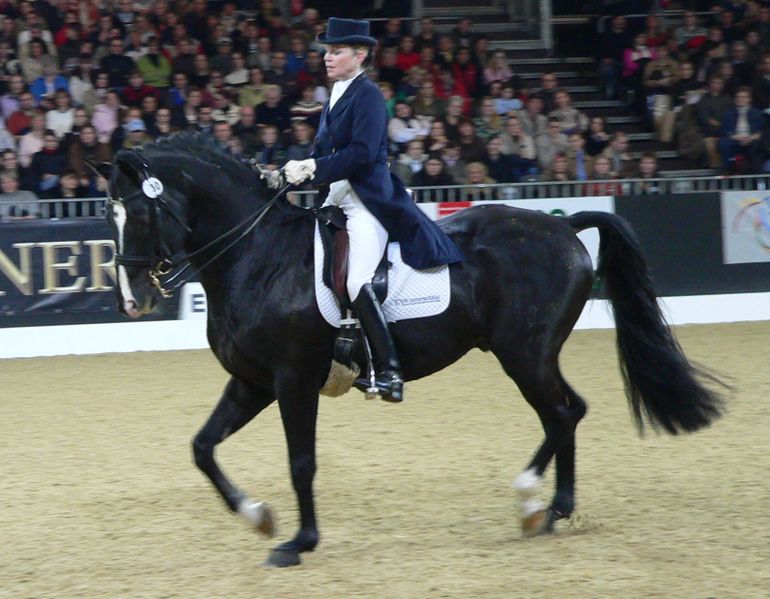Horse colors
Horses have coats in shades of black, red, white, brown and grey, and mane and mane and tail color that can either match or contrast with color of the coat. Since that coat can be solid, patched, or spotted in various ways, and markings of white on the face and legs also modify the horse's coat, horse color is . The genetics of horse colors is a fascinating subject in and of itself, but also is of practical use to the horse breeder. Some breeds, such as the Paint horse, and the Apaloosa, are primarily known for the pattern of their coats. Speculation about just how color and pattern is inherited in horses has been around as long as horse breeding has, but it is only in the last decades that an understanding of the genetics has become sophisticated enough to go beyond speculation and actually test horses for color genes. The genes that influence coat color also influence eye and skin color, and the color of hoofs. The genetics of color do not simply specify the pigment of horse hair, but also its distribution. For example, whether a color is limited to the tip of a hair or evenly distributed over the entire hair is one trait that is inherited as a separate factor than the color itself.
Solid colors
Chestnut and sorrel
Black or bay: the agouti gene
Bay
Blood bay
When a bay horse has a particularly red coat, the name "blood bay" is often used.
Black
When a black horse is doubly recessive for the Agouti gene, pigment is spread evenly over each hair and the apearance is black rather than bay.
Grey horses
Most horses called "white" are actually grey. The gene responsible for this color is actually responsible for a process, "greying". Grey foals are born a different color than they will have as young horses, and that color will usually change over time, becoming lighter and lighter.
In youth, many grey horses have lighter coats than manes and tails, and may have a black mane and tail through much of their adult life.
Dilution genes: The creme gene
Unlike many other mammals, horses are that are albino are not simply unusual, but unhealthy. When a horse has light eyes and pink skin, along with a light coat the gene at work is a dilution gene, rather than some form of lethal white. [1]. The creme gene codes for a modification of color, in its dominant form, CR, there is no modification. A heterozygous recessive, CR/cr, will lighten coat color and a doubly recessive creme gene, cr/cr will doubly lighten it. The resulting color will depend on the base color of the horse and other factors, as outlined below.
Buckskin
Dilution of a bay horse results in buckskin coloration. This horse will have at least one copy of the dominant agouti gene, AG, so that black pigment on the coat is relegated to the mane, tail and points. A well-marked buckskin horse has a tan body, black mane and tail, and black "socks".
There are additional modifications to the body coat color that are known by the colloquial terms "smutty buckskin", "sooty buckskin" and "black buckskin", when a percentage of body hairs are entirely dark.
Grulla
Smoky black
Dilution of a black horse results in smoky black coloration. Such a horse, like all black horses, will be doubly recessive for the agouti allele (ag, ag) and black pigment will be evenly spread along each hair.
Palomino
A chestnut horse (also caled sorrel) with a single dilute gene yields a palomino horse. Like the buckskin, there can be additional modifications of coat color. A so-called "chocolate palomino" occurs when XXX. The Paso fino Tomaria's Gallardo is an example of a chocolate or smutty palomino.
Cremello
This horse has a cream-colored coat that can range from a rather deep cream to near white. It is a doubly dilute form of a chestnut horse, and will have pink skin and blue eyes.
Perlino
Another double dilute, the perlino XXX
